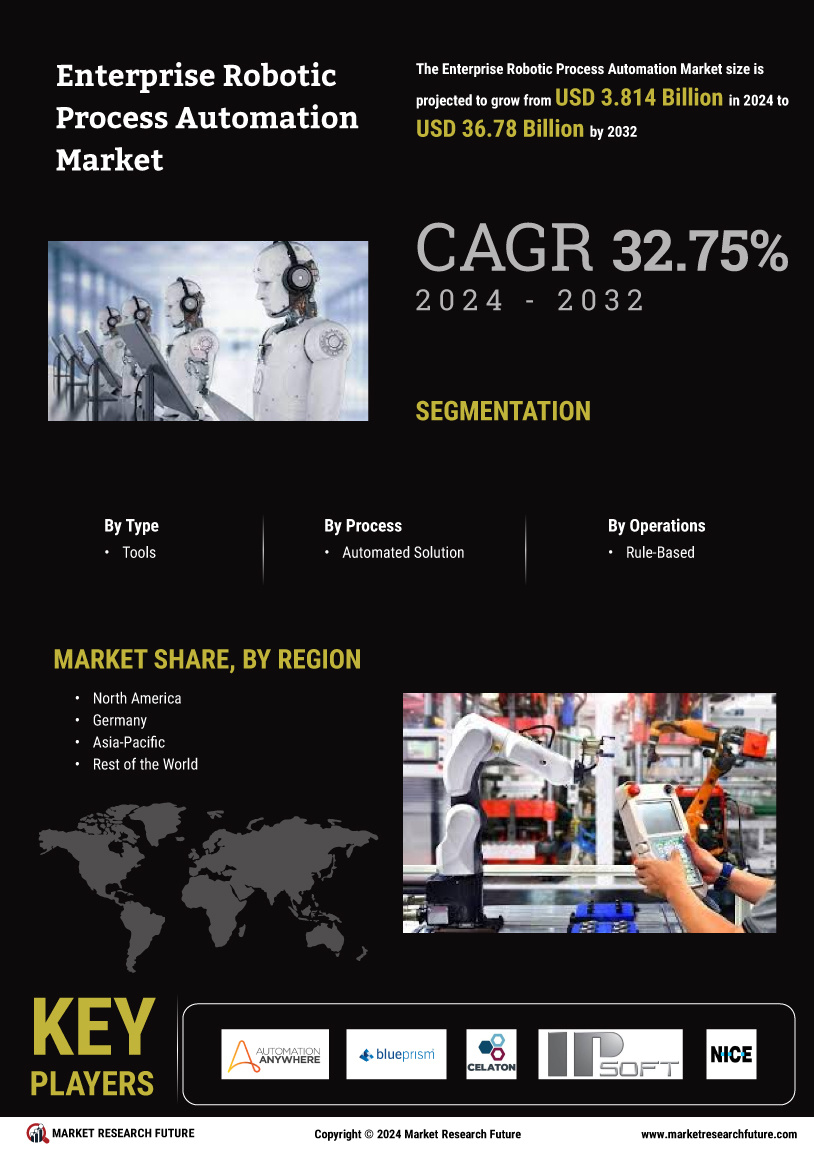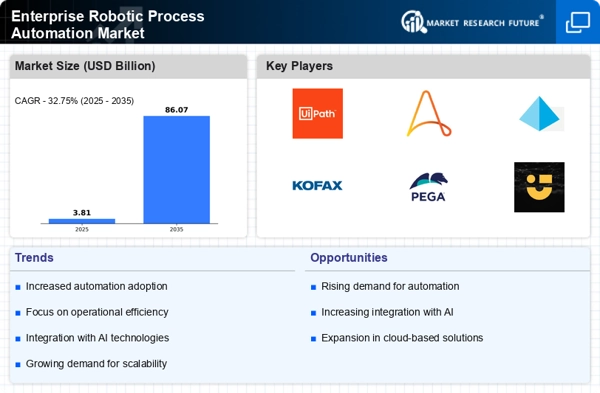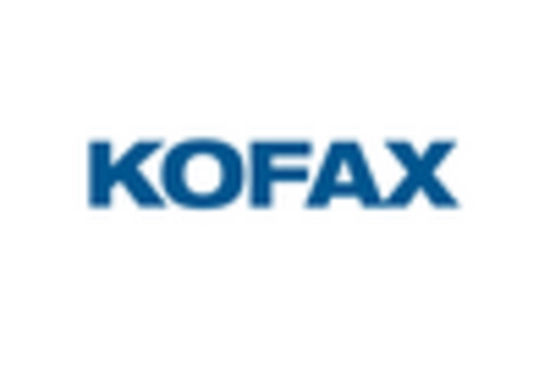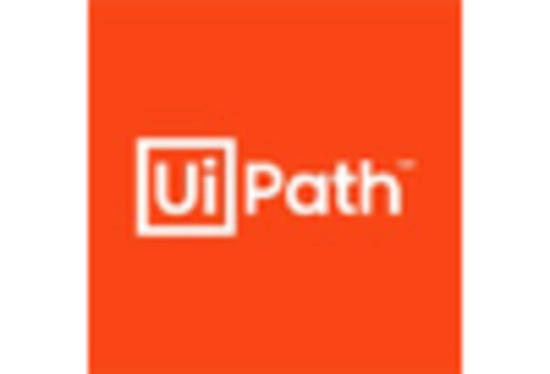Expansion of Cloud-Based RPA Solutions
The shift towards cloud-based solutions is a pivotal driver in the Enterprise Robotic Process Automation Market. As organizations increasingly adopt cloud technologies, the demand for cloud-based RPA solutions is on the rise. These solutions offer scalability, flexibility, and cost-effectiveness, making them attractive to businesses of all sizes. Market analysis indicates that the cloud-based RPA segment is projected to grow at a compound annual growth rate of over 25% in the coming years. This expansion is largely attributed to the ease of deployment and maintenance associated with cloud solutions, which allows organizations to focus on core business activities while automating routine tasks. Thus, the cloud transition is a key factor influencing the Enterprise Robotic Process Automation Market.
Regulatory Compliance and Risk Management
The increasing complexity of regulatory requirements is a significant driver in the Enterprise Robotic Process Automation Market. Organizations are under pressure to comply with various regulations, and RPA offers a solution to streamline compliance processes. By automating data collection and reporting, businesses can reduce the risk of non-compliance and associated penalties. Market Research Future reveal that companies utilizing RPA for compliance can decrease audit preparation time by up to 60%. This capability not only mitigates risks but also enhances operational transparency, making RPA an essential tool for organizations aiming to navigate the regulatory landscape effectively. Thus, compliance and risk management are pivotal factors propelling the Enterprise Robotic Process Automation Market.
Increased Demand for Operational Efficiency
The Enterprise Robotic Process Automation Market experiences a surge in demand as organizations strive for enhanced operational efficiency. Companies are increasingly adopting RPA solutions to streamline processes, reduce manual errors, and improve productivity. According to recent data, organizations that implement RPA can achieve up to a 30% reduction in operational costs. This drive towards efficiency is not merely a trend but a necessity in a competitive landscape where businesses must optimize resources to maintain profitability. As a result, the Enterprise Robotic Process Automation Market is witnessing a robust growth trajectory, with many enterprises investing in automation technologies to remain agile and responsive to market changes.
Rising Need for Data-Driven Decision Making
In the current business environment, the Enterprise Robotic Process Automation Market is significantly influenced by the rising need for data-driven decision making. Organizations are increasingly leveraging RPA to gather, analyze, and interpret vast amounts of data efficiently. This capability allows businesses to make informed decisions swiftly, enhancing their strategic positioning. The integration of RPA with advanced analytics tools is expected to grow, as companies recognize the value of real-time insights. Market data suggests that organizations utilizing RPA for data management can improve their decision-making speed by up to 50%. Consequently, this trend is propelling the growth of the Enterprise Robotic Process Automation Market.
Growing Focus on Customer Experience Enhancement
Enhancing customer experience is becoming increasingly critical for businesses, driving growth in the Enterprise Robotic Process Automation Market. Organizations are utilizing RPA to automate customer service processes, enabling faster response times and improved service quality. By automating repetitive tasks, companies can allocate more resources to personalized customer interactions, which is essential in today’s competitive market. Data indicates that businesses implementing RPA in customer service can see a 40% improvement in customer satisfaction scores. This focus on customer experience not only fosters loyalty but also contributes to revenue growth, thereby reinforcing the importance of RPA in the Enterprise Robotic Process Automation Market.


















Leave a Comment